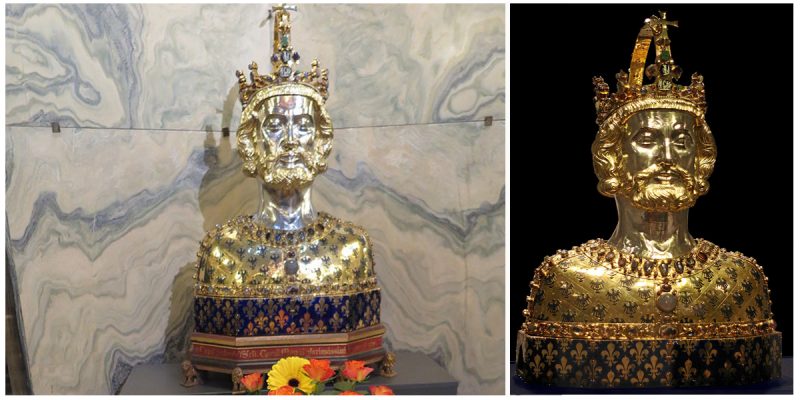Charlemagne, also known as Charles the Great or Charles I, was the King of the Franks who took the Throne in 768. From 800, he reached the height of his power when he served as the first Holy Roman Emperor.
Charlemagne ruled as an emperor for over thirteen years, and after his death in 814, he was laid to rest in his imperial capital of Aachen.
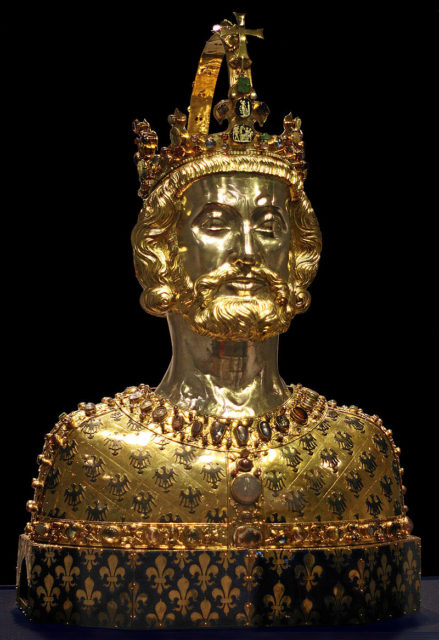
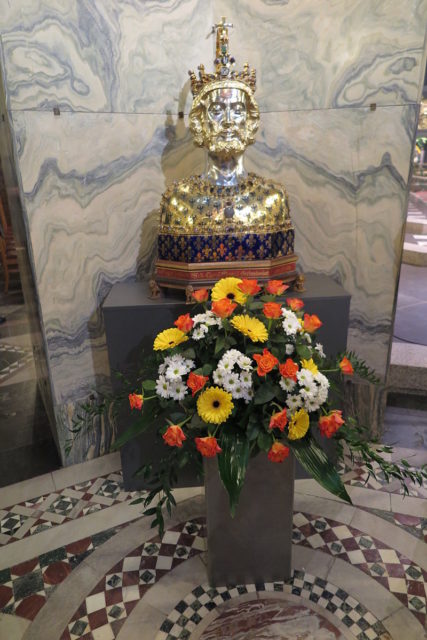
After 186 years, keen to present himself as the successor of Charlemagne, Otto III, opened the late king’s burial vault. According to Thietmar of Merseburg who was a German bishop and chronicler, when the vault was opened, Otto took some of the relics and brought them to Rome. After Otto III, the remains of the king were exhumed for the second time. Frederick, I Barbarossa reburied the remains in an elaborate third century A. D. Roman sarcophagus which was made of marble depicting the Rape of Persephone.
In 1215, the king’s remains were exhumed again, and the relics were laid into a rich golden casket. After 200 years, King Charles IV became very interested in Charlemagne’s eternal rest. 500 years after the death of Charlemagne, he ordered the Bust which was his donation at the time when he was crowned king in the Aachen Cathedral.
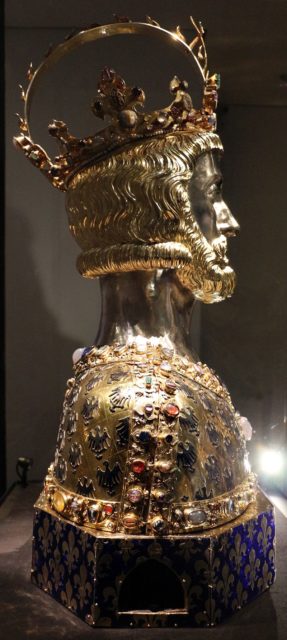
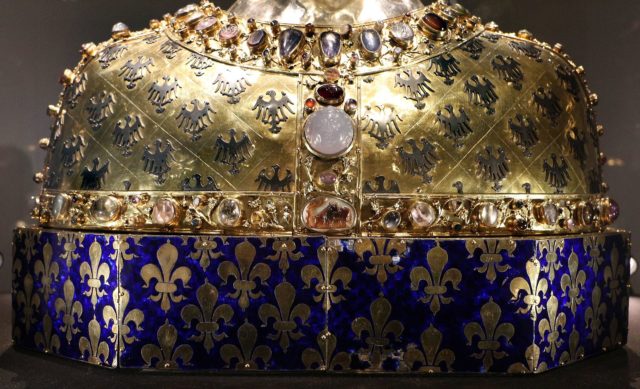
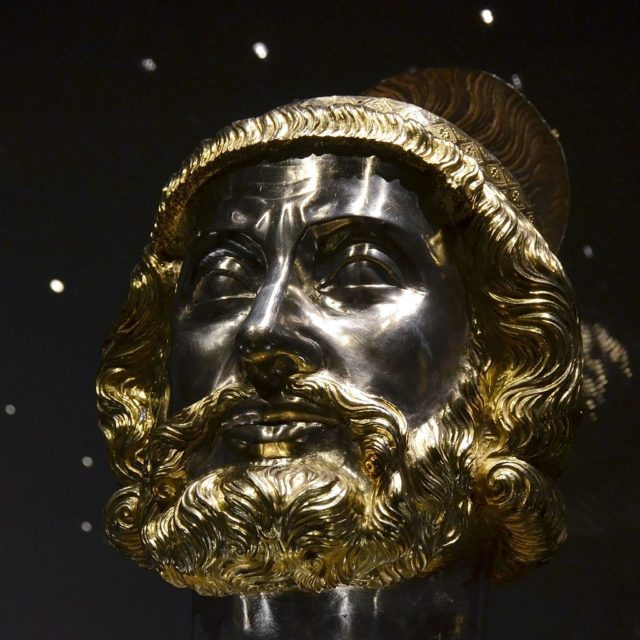
The bust is an idealized representation of the king which includes a piece of Charlemagne’s skull. The whole face structure including the hair style and the fleur-de-lys crown is in the taste of the 14th century. The hair and the beard are covered with golden layers, and the skin is made of silver and is partially gilt. The tunic is decorated with silver Reichsadler, and the eagles are decorated with precious stones surrounded by a filigree border.
With an opening on either side for a wooden carrying frame, the bust stands on an octagonal pedestal. As part of the 13th- century French tradition of royal images, the reliquary is an idealized portrait of the Frankish King. The bust portraying Charlemagne himself is a masterpiece of the medieval sacral art.
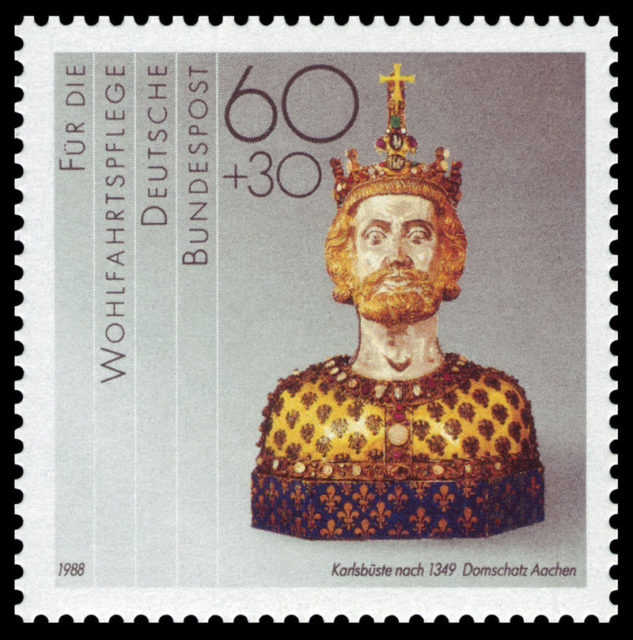
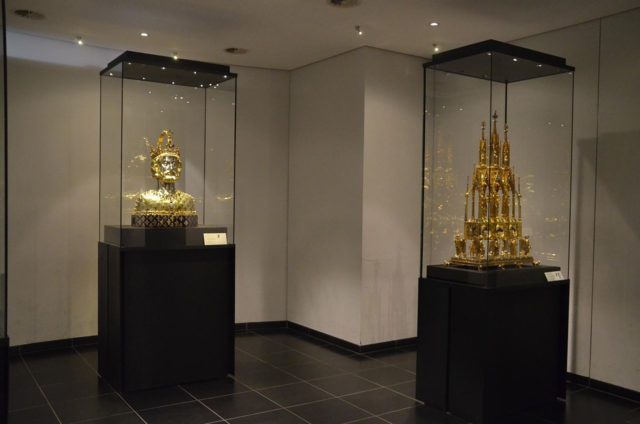
The bust is one of the most significant examples of Gothic goldwork and until today, it is the best-known example of a reliquary. Since 1862, the remains of the King were exhumed several times so they could be studied.
In 1988, they were exhumed secretly, and after years of meticulous examinations, the results of the research were announced. The skeleton matches the description of Charlemagne. Today, the Bust of Charlemagne is kept in the Aachen Cathedral Treasury as part of the Late Medieval treasure.
